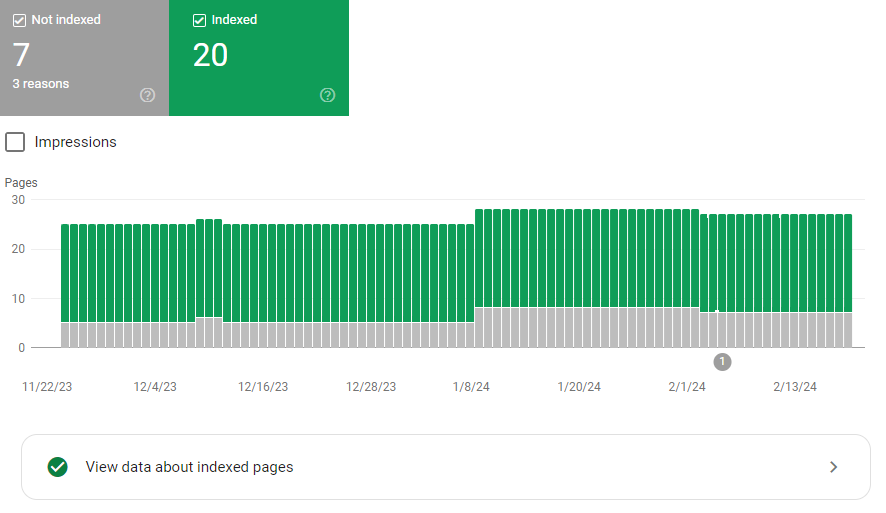Have you ever worried about the no-index page on Google Search Console?
A new client who just started using the Google Search Console emailed, asking if non-indexed pages would prevent her website’s ranking on Google.
As web designers and SEO expert, I often rely on Google Search Console to gain insights into our website’s performance in search results. One common concern that may arise when using this tool is the discovery of no-indexed pages. However, understanding why these pages are no-indexed and the potential benefits they offer can alleviate any worries and even contribute to a more strategic approach to SEO.
/ In simple terms, a no-index page is a web page that has been set up in a way that tells search engines like Google not to include it in their search results. This means that when people search for information online, the page won’t appear in the search results. /
First and foremost, it’s essential to recognize that no-indexed pages are not necessarily a sign of an issue with your website. In fact, no-indexing certain pages can be a deliberate and beneficial strategy. Let’s explore why seeing no-indexed pages in Google Search Console is okay and nothing to worry about.
- Purposeful No-Indexing: Many websites have pages that are not intended to appear in search engine results. These could include thank you pages, login pages, duplicate content, or pages under development. By no-indexing these pages, we can ensure that search engines do not waste resources crawling and indexing content that is not meant for public consumption.
- Content Control: No-indexing specific pages allows us to have more control over which content appears in search results. For instance, if there are pages with thin or duplicate content that could potentially harm the overall SEO of the site, no-indexing them can prevent such issues.
- Focusing Crawl Budget: By no-indexing certain pages, webmasters can direct search engine crawlers to prioritize crawling and indexing more important and relevant pages. This can help ensure that the most valuable content on the website is given priority in search results.
- Strategic Landing Pages: In some cases, web designers and marketers may create landing pages for specific marketing campaigns or promotions. No-indexing these pages until the campaign is live allows for a coordinated launch and prevents premature indexing of temporary content.
So, how can web designers and SEO leverage this understanding within Google Search Console to optimize their website’s performance?
- Monitoring and Analysis: Regularly checking Google Search Console for no-indexed pages can provide valuable insights into the indexing status of the website. This information can help identify unintentionally no-indexed pages or uncover potential issues that need attention.
- Strategic Implementation: Collaborating with marketers to understand the intent behind certain pages and their role in the overall marketing strategy can help web designers make informed decisions about which pages to no-index and which to keep indexable.
- SEO Optimization: Utilizing the data from Google Search Console, web designers and marketers can work together to optimize the indexing status of pages, ensuring that the most valuable and relevant content is being indexed and displayed in search results.
In conclusion, encountering no-indexed pages in Google Search Console should not be a cause for alarm. Instead, it presents an opportunity to understand the purpose behind these decisions and leverage them to enhance the website’s overall SEO strategy. By working collaboratively, web designers and marketers can use this information to improve content visibility, focus crawl budget, and drive more targeted traffic to the website. Understanding the nuances of no-indexing empowers us to make more informed decisions and ultimately achieve better results in the online landscape.


